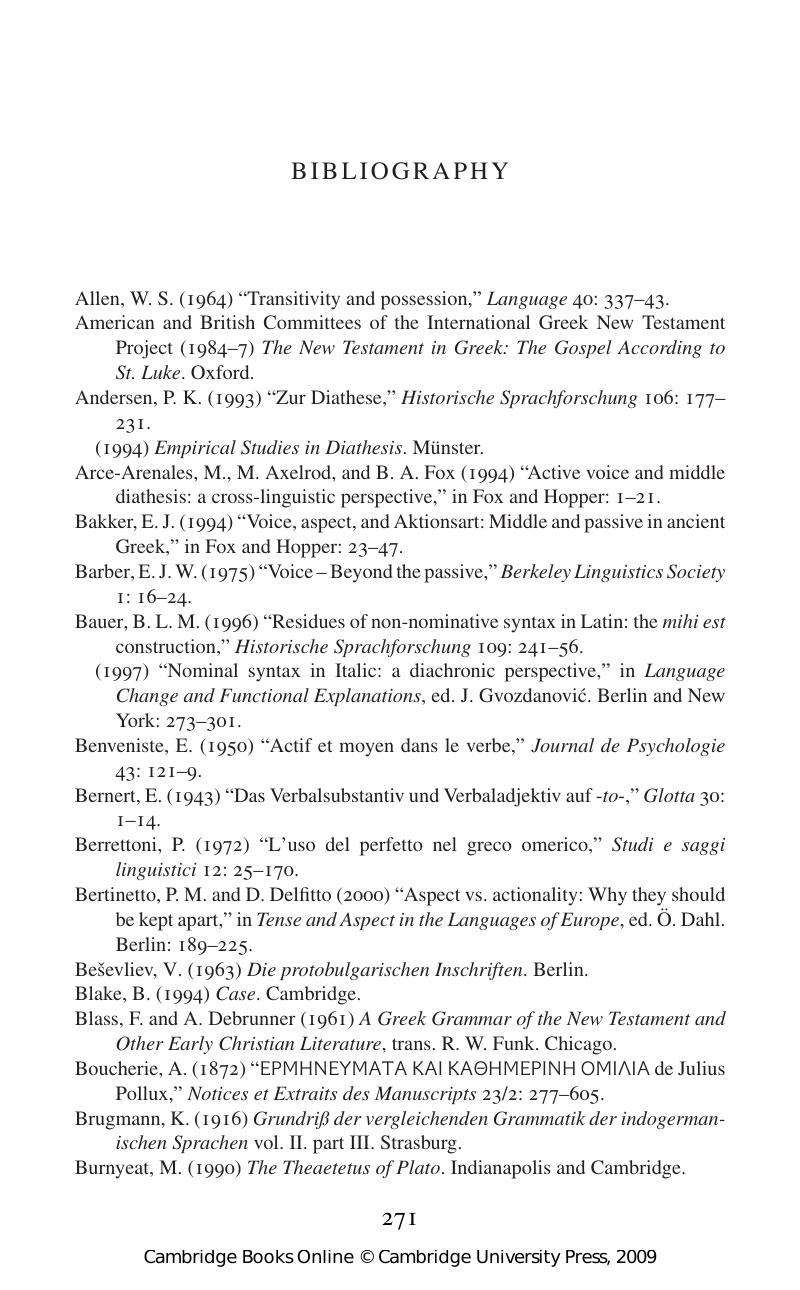Book contents
- Frontmatter
- Contents
- Acknowledgments
- Abbreviations
- 1 Passive verbs and agent constructions
- 2 Agent constructions in Homer
- 3 Agent constructions with perfect passive verbs
- 4 Agent constructions with prepositions other than ὑπό: prose
- 5 Agent constructions with prepositions other than ὑπό: tragedy and comedy
- 6 The decline of ὑπό in agent constructions
- Summary
- Bibliography
- General index
- Index of Greek words
- Index of passages discussed
- References
Bibliography
Published online by Cambridge University Press: 22 September 2009
- Frontmatter
- Contents
- Acknowledgments
- Abbreviations
- 1 Passive verbs and agent constructions
- 2 Agent constructions in Homer
- 3 Agent constructions with perfect passive verbs
- 4 Agent constructions with prepositions other than ὑπό: prose
- 5 Agent constructions with prepositions other than ὑπό: tragedy and comedy
- 6 The decline of ὑπό in agent constructions
- Summary
- Bibliography
- General index
- Index of Greek words
- Index of passages discussed
- References
Summary

- Type
- Chapter
- Information
- Expressions of Agency in Ancient Greek , pp. 271 - 276Publisher: Cambridge University PressPrint publication year: 2005



